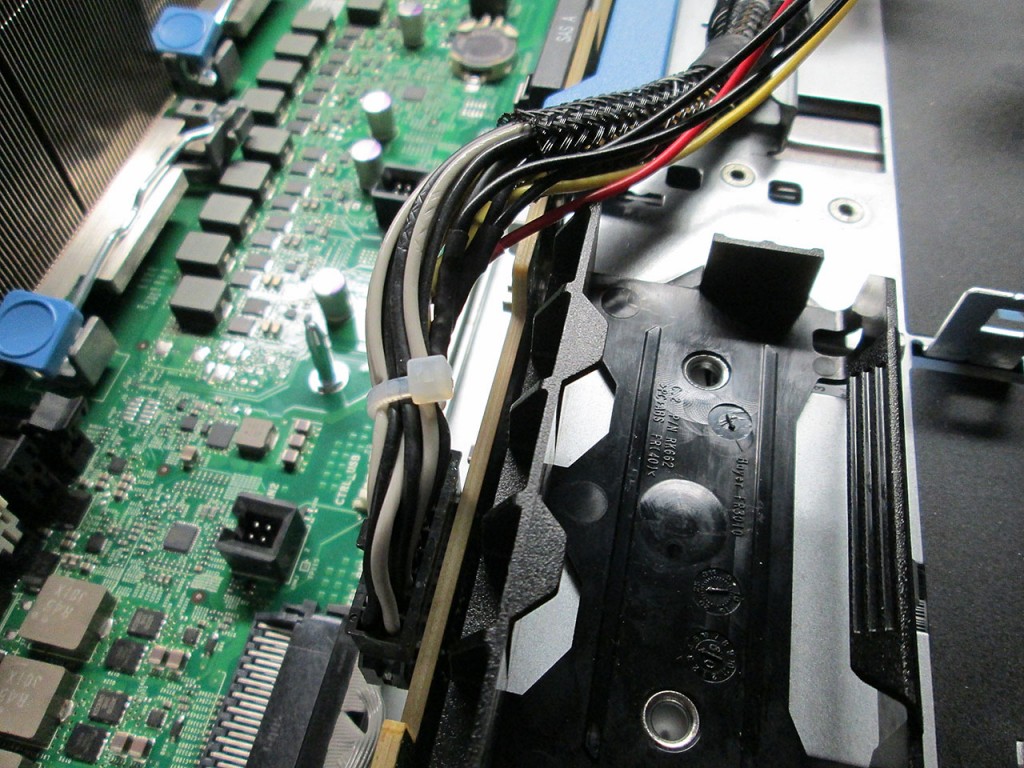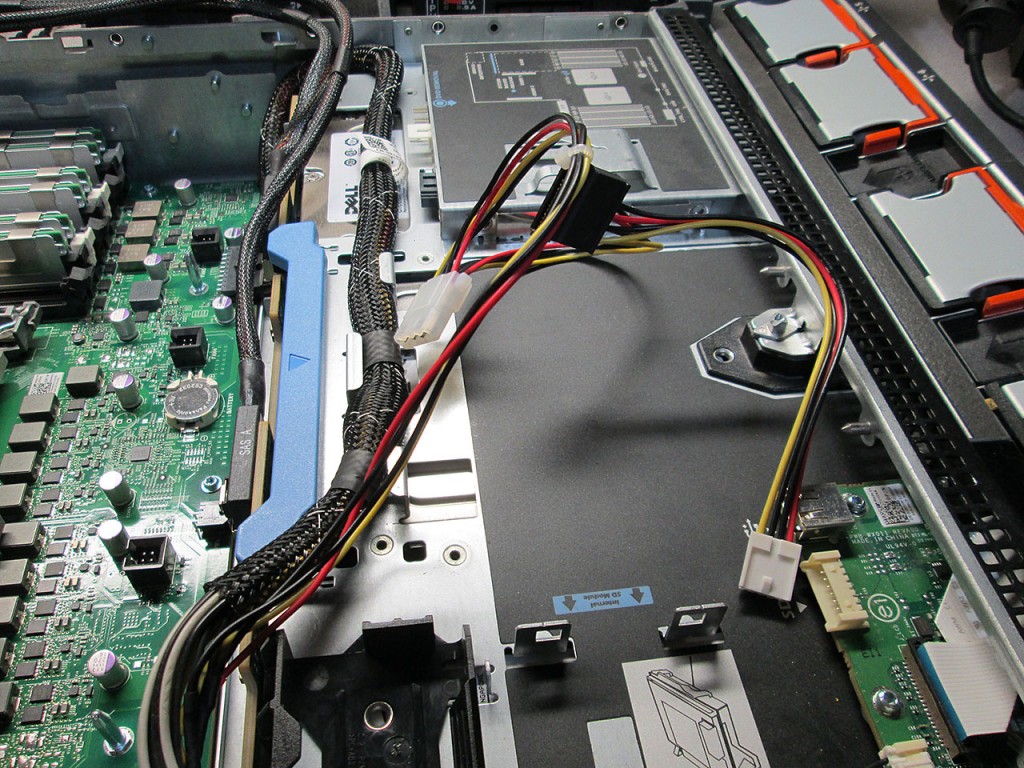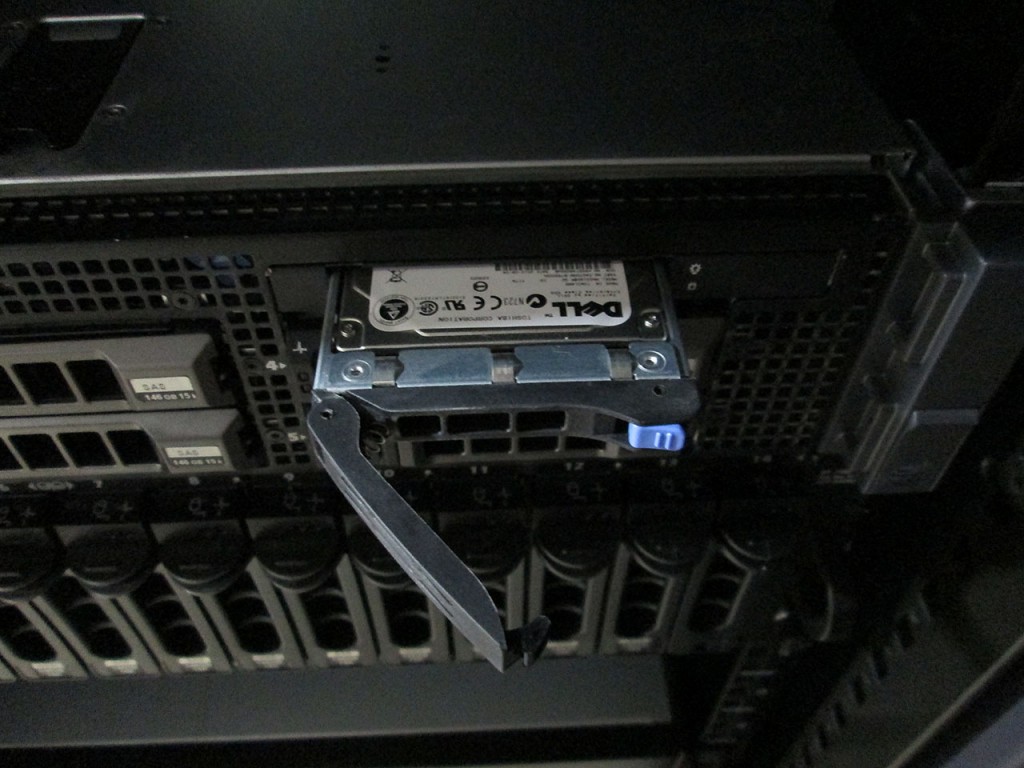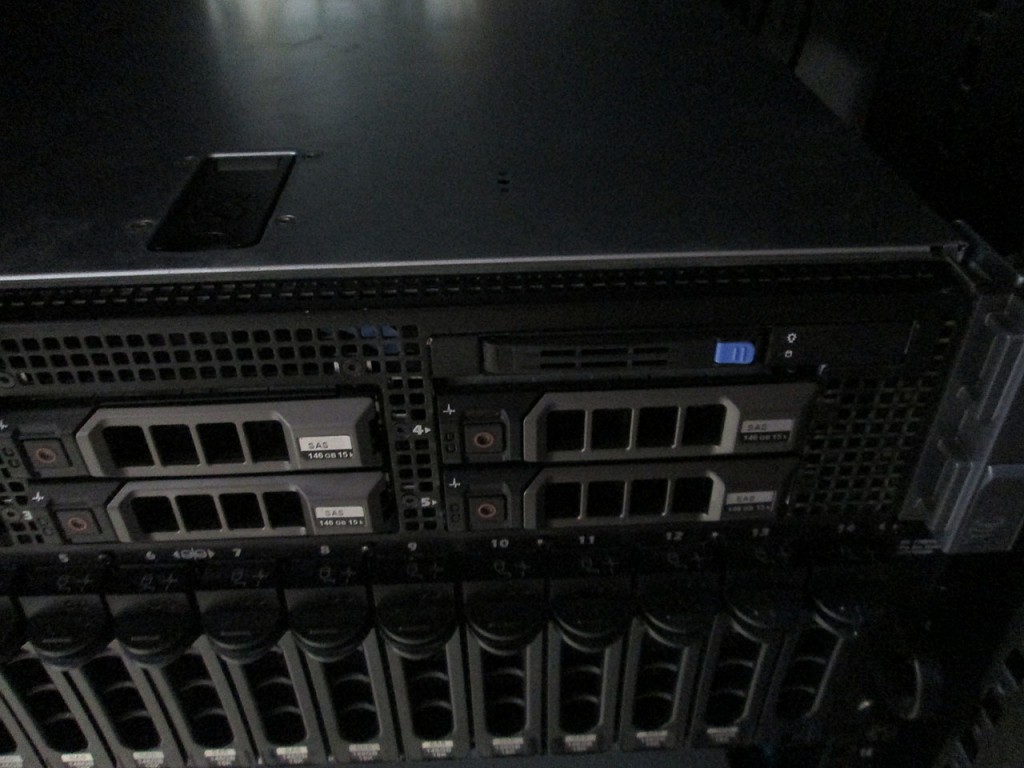Hardware Modification
Before I can use it in my setup, I’ll have to do a bit of mangling in order to make it suitable for my purpose. And by than, I mean adding a Molex connector to the server so that I can replace the internal DVD drive with a hot-swap hard drive dock that will act as a boot device.
First step is to find a 12V/5V point on the server that I can tap the Molex cable. Looks like the backplane supplies all the power I need, which makes sense since it needs to power the drives that require both 5V and 12V lines.

So, let the mangling begin. This is simply done by cutting the line going into the connector and splicing the molex cable in.

Just because I’m doing something unorthodox doesn’t mean it can’t be done right. All the cables are properly and securely soldered and heat shrinked. The cable bundle is then once again zip tied and it looks like factory made.

The cable that’s spliced in comes with a standard HDD Molex connector, a Floppy Molex Connector and a SATA power connector. In this case, I’ll be using the “Floppy” connector to power the hot-swap bay.

The next step is to route an additional SATA cable from the middle of the motherboard to the hot-swap bay. Incidentally, I found that the SATA-A header doesn’t actually support the SATA drive that I used, even though it works fine with the DVD Drive. The SATA-B connector works fine though, so I’m using that to boot off of.

I’m using a simple 160GB 2.5″ SATA drive as the boot drive for NexentaStor. Don’t really care for redundancy at home since I can deal with an hour of downtime which is how long it would take me to rebuild NexentaStor on a new drive.


1) Are you using Dell H200 external to replace PERC 6/E that connects MD1000?
What is the model?
2) Do you have an update on how the setup is going and performance?
Yes. I’m using the H200 to connect to the MD1000.
I’ve been very happy with NexentaStor performance in general. On the R710 the thing absolutely flies, especially if you combine with it 4 Lane iSCSI Round Robin MPIO. With the caching system of Nexenta, VM’s on the ESXi host absolutely fly. It’s actually funny watching VM’s reboot because it happens almost instantaneously. I do have a 10Gbe project brewing as I want to switch to NFS and get an additional boot in random performance and simplify my network setup. Right now I have 4 NIC ports going to every host just for iSCSI traffic.